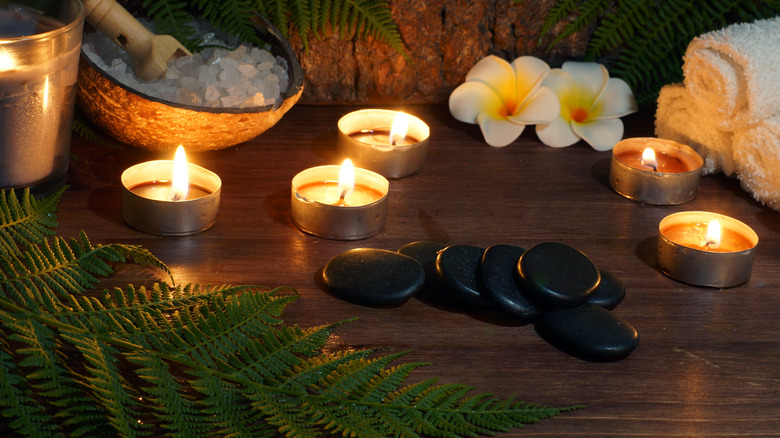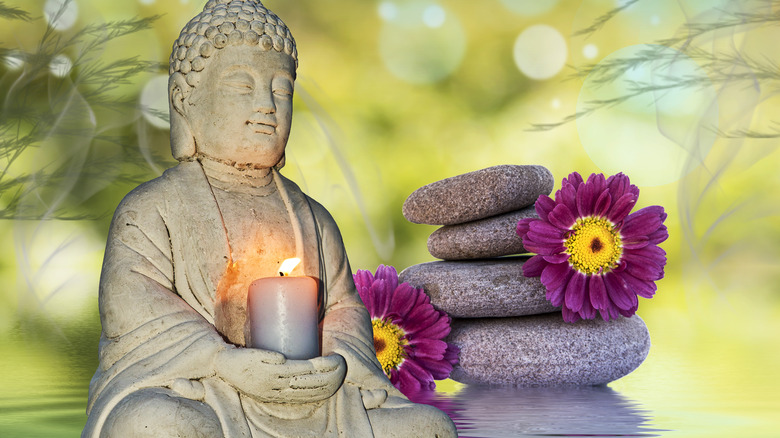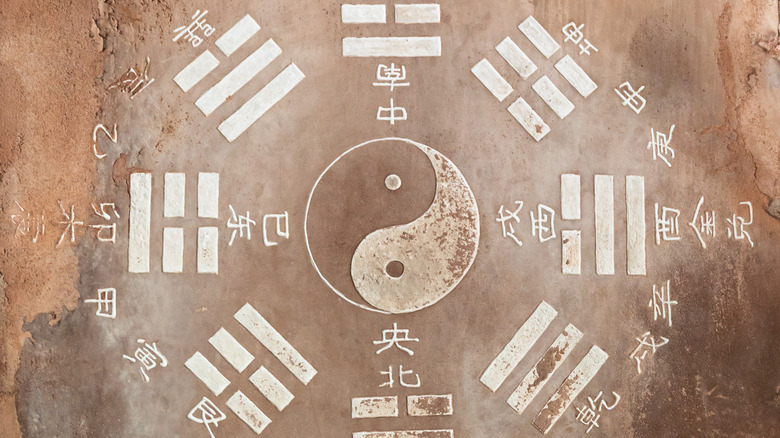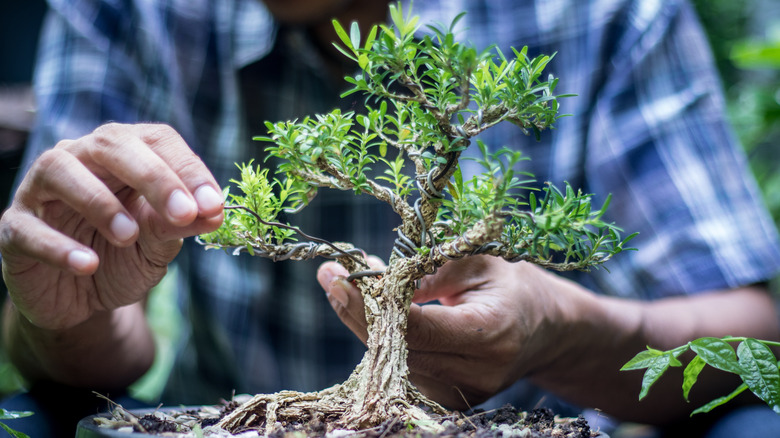How To Feng Shui Your Garden
Nicholsons notes that the purpose of feng shui gardens is for people and nature to connect through spiritual means. This technique originally came from ancient China and has more recently been popularized within Western civilization, according to National Geographic. The aim of practicing feng shui is to balance the elements of yin and yang, improving the flow of positive energy to any living creature.
There are five elements that go into creating a feng shui garden: fire, metal, wood, earth, and water. Each element is meant to face a specific direction. Water to the north, earth to the northeast and southwest, wood to the east and southeast, fire to the south, and metal to the west and northwest. Although there is still speculation regarding the origins and effectiveness of feng shui, it remains a popular practice in China to this day. Those who are able to achieve feng shui claim it has positive impacts on their life and mood. Let's look at what steps need to be taken to be successful in creating a feng shui garden.
Choose your focal point
Before starting your project, you should have a focal point for your garden in mind. This object should match the energy you would like to bring into your garden, whether it be calming, inviting, or enlightening. If you would like to have a lively garden, a small tree or green shrub could serve as a focal point. For soothing energy, a fountain is a good option. This will be the first place that people look when entering your garden, so it has a lot of power over the energy that your space holds.
Having a focal point is also necessary to create a balanced and peaceful space where everything is in harmony. If there is no focal point in the room, it is basically impossible to achieve feng shui because there will be an imbalance of passive and active energies.
Plan out your layout
Once your focal point is selected, using the bagua, or feng shui energy map, is a good way to start planning your layout. Either shaped as an octagon or a square, the bagua contains eight areas revolving around the center. Each area has various symbolic meanings, but they generally refer to eight different aspects of life, such as career, family, health, and reputation. This tool has been used since ancient times and is a solid source of guidance for those getting started.
The bagua is most commonly used over floor plans, but when designing your garden, a photo or detailed drawing is a good alternative. Use a three-by-three grid to break up the photo into nine equal parts. Using the entryway to your lot or garden as an anchoring point, align the bagua with your photo. Your focal point should be in the center. This will guide you on where to put items in order to bring specific energy to any area of your life. For example, if you want to focus on bringing in wealth and abundance, you should spend extra time on that area of your garden. Add extra plants, furniture, or objects associated with wealth.
Colors for feng shui balance
As noted before, each feng shui garden should have different elements aligned with their specific directions. The Spruce says that it isn't necessary to use all five elements; only use those that feel best in your space based on what they represent. All five of these elements are associated with different colors that can be used in your garden.
Wood represents liveliness and development. This element is connected to anything green, such as trees and shrubs. Fire is an indication of goodwill and passion. Any red plant, such as roses or red chrysanthemums, will achieve this energy. Earth is an element that keeps people grounded. Yellow plants, such as sunflowers, can work to unlock this element. Water is a very calm and soothing element. Gardeners should use plants that are either black or dark navy blue. Something like a Persian lily or "Queen of the Night" tulips can work. Metal is attached to the color white and symbolizes unclouded energy. Gardeners who are interested in this element can use flowers, such as white hydrangeas or jasmine.



